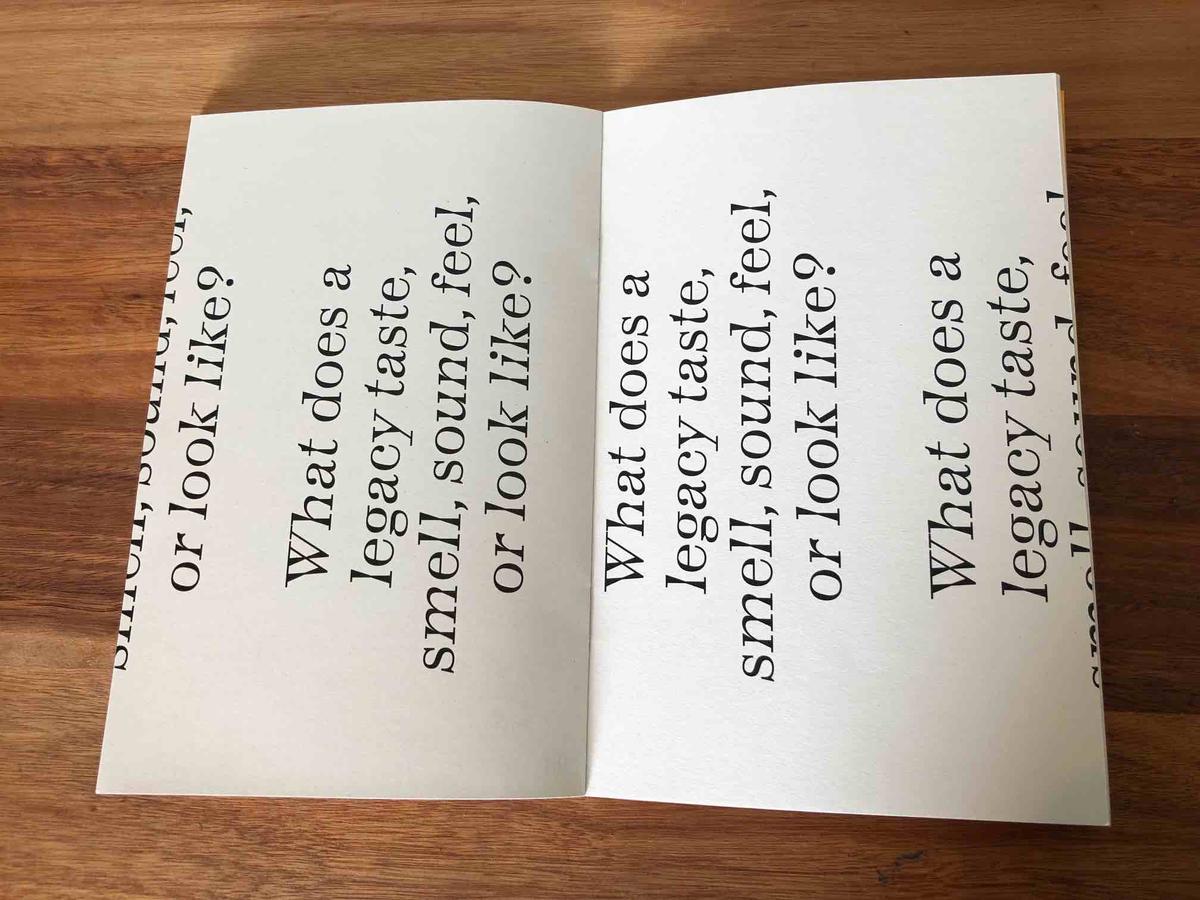Writers are inspired and challenged by the visual arts, whether it be for its politics, its abstraction, its humour, or through creative and productive friendships with the artists themselves. But what does “responding” to an artwork really mean? What are a writer’s specific considerations for different commissions and publications? Beyond the essay, what is the potential of fiction, poetry, and other literary forms to respond to a work of visual art? And what is the role of the reader, as the third party in a collaboration between a writer and artist?
This podcast was recorded at Te Pātaka Toi Adam Art Gallery on 24 May 2023, in conjunction with the CIRCUIT exhibition Legacies.
A starting point for this kōrero is the accompanying Legacies reader edited by CIRCUIT’s 2022 Writer in Residence, Thomasin Sleigh. The conversation begins with Thomasin Sleigh inviting Tina Makereti to read an excerpt from her short story, Black Milk (2016), which is republished in the reader. This story was written in response to a photograph by Fiona Pardington and went on to be the Pacific Regional Winner of the Commonwealth Short Story Prize in 2016.
Tina is joined in conversation by writers Gregory Kan and Gwynneth Porter to discuss their writing and its dynamic and evolving relationship to the visual arts.
Please note there is a brief microphone malfunction from 36-39 minutes.
List of topics
00:00 Welcome and introduction to the speakers from Thomasin Sleigh.
2.45: Background to the talk and the Legacies reader as an exemplar for different ways writing can respond to an artwork.
5.23: Tina Makereti discusses her short story Black Milk (2016) which was written in response to a work by artist Fiona Pardington. She reads an excerpt of the text and discusses her writing process.
20.00: Tina Makereti on working with Witi Ihamaera on an anthology of Māori and Pasifika writing entitled Black Marks on a White Page (2017). She discusses selecting images for the book by contemporary artists including Lisa Reihana, Pati Tyrell, Shane Hansen, Yuki Kihara, Fiona Pardington, Robert Jahnke, and others.
24:00: Thomasin Sleigh introduces Gwyneth Porter and her varied writing styles. "How do you decide the form of a piece of writing in response to an artist?"
29:00: Gwyneth Porter on editing—"I’d be lucky if 10% comes out." She discusses working with artists, understanding their research processes, concerns, what is them and what is the work, the ethics of what should remain private.
34:00: Thomasin Sleigh asks Gregory Kan about their writing for the Physics Room publication Heavy trees, arms and legs: Nicola Farquhar and Sorawit Songsataya (2022). Greg: “I wanted something that was going to multiply and generate more meaning”.
37:30: "Does the visual arts give you license to be more abstract?" Gregory Kan talks about "preserving spaciousness" by "leaning into the radical finitude of what’s not there" and "the diversity of codes and approaches in one thing…" "…trying to generate richness out of something that might be seen as opaque”.
39:30: Thomasin Sleigh asks Gregory Kan about his software app which takes text and pulls out nouns, similes or other elements of language. Thomasin compares this to Greg’s own writing practice of "taking the materiality of the text and playing with it in a way that artists do…" Greg discusses his resistance to writing that flattens space for the reader to construct their own relationship to the artwork.
42:30: Tina Makereti makes a comparison to Pasifka forms of storytellling… "something not having an ending…or a beginning."
43: How much do the panellists consider the reader when they’re writing?
48: How could institutions encourage more collaboration with writers and artists? Gwyneth Porter: "Institutions that are committed to the agency of the artist are the most interesting to work with… you’d think that would be more of a normal thing but it doesn’t tend to be."
50: Does the art market assert any pressure on your work?
51: Thomasin Sleigh discusses Gwyneth Porter’s assertion that "All language obscures that of which it speaks." The panel discuss "the gift/curse of language."
55: Audience question: Writing from memory versus working from reproductions.
57: Audience question: Who’s reading art writing?
61: Audience question: Do you enjoy the process of building connections between the works and the artists themselves?
64: How do you deal with a creative block?

-circuit.jpg)
,-part-of-the-wastelands-(2024).-installation-view,-auckland-art-gallery-toi-o-tamaki,-2025.-image-courtesy-of-the-artist.jpg)